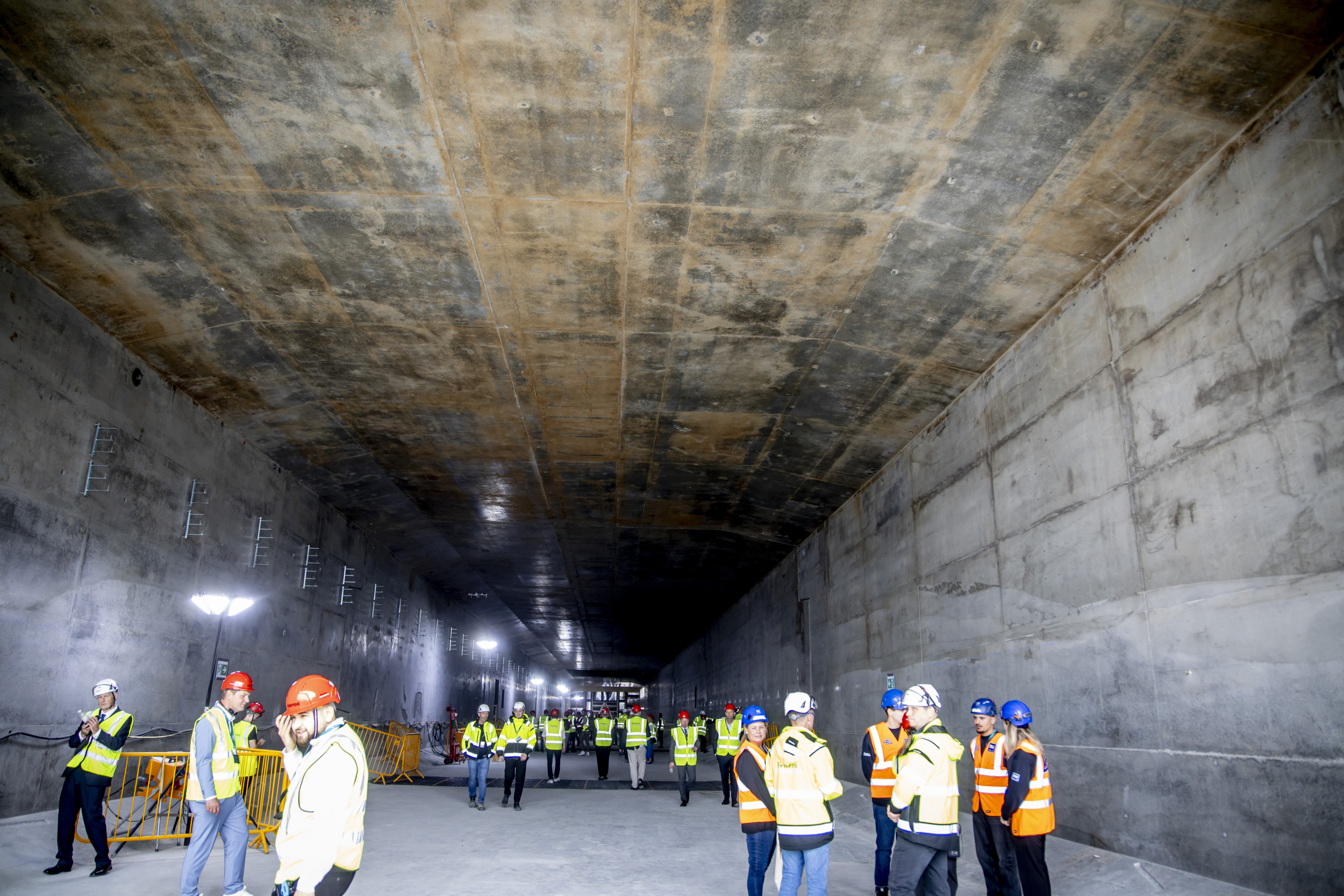Uncommon Knowledge
Newsweek is committed to challenging conventional wisdom and finding connections in the search for common ground.

The first section of the world’s longest underwater road and rail tunnel has been constructed, putting the project on track for completion by the end of the decade.
At 18,000 meters, The Fehmarnbelt tunnel will link the Danish island of Lolland with the German island of Fehmarn. It is said the tunnel will cut travel times between Scandinavia and Central Europe to under ten minutes, while contributing to tourism and both countries’ green transitions.
However, conservationists told Newsweek that they fear the ambitious new link won’t live up to the developers’ environmental promises.
Construction began in 2020 on the Danish side, and 2021 on the German side, according to Femern A/S, the Copenhagen-based firm charged with designing and planning the tunnel.
Completion of the tunnel is scheduled for 2029, and will apparently cut travel time between the countries from 45 minutes by ferry to 7 minutes by train.
Works are currently focused on dredging the tunnel trench and constructing new breakwaters in Lolland, the latter creating “around 300 hectares of new land,” according to Femern.
The project, named after the 12-mile Fehmarn belt in the Baltic Sea under which it will be built, will be around 41 meters wide and sit at a depth of up to 130 meters.
Denmark will be responsible for funding the project, the costs of which were estimated at €5.5 billion in 2008, around €7.7 billion today, which will be paid off with tolls from those using the completed tunnel.
When contacted, Femern told Newsweek that Fehmarnbelt link’s total construction framework is now 55.1 billion Danish krone, or $7.9 billion.
Femern said that the tunnel had been designated as a “priority project” by the European Union, which has provided funding to several similar transit projects hoped to create a trans-European transport network.

Through its through its Connecting Europe funding facility, the EU has so far granted Fehmarnbelt around $1.2 billion in subsidies for design and construction costs.
Last Monday, King Frederik X of Denmark was on site in Lolland to celebrate completion of the first 217-metre sections of the tunnel.
During the ensuing ceremony, the country’s transport minister Thomas Danielsen called the project “a milestone in Danish history,” and said: “With the Fehmarnbelt tunnel, we get a fantastic and cross-border infrastructure project.”
“Today is visible proof of how far we have come,” added Mikeel Hemmingsen, CEO of Sund & Bælt, the Danish company in charge of the tunnel’s construction. “The Fehmarnbelt tunnel will show the way for many other major projects in Denmark and in the rest of the world.”

Its developers have championed the tunnel as an investment in climate friendly transport, providing a greener alternative to air travel between Scandinavia and Central Europe.
Speaking to Newsweek, Søren Have of Copenhagen-based climate-focused think tank CONCITO echoed these expectations, and said: “While all such infrastructure projects have substantial carbon emissions from construction, some have the potential to pay it back over time, through lower emissions from reduced or changed traffic patterns. The Fehmarnbelt tunnel is such a project.”
However, this sentiment was not shared by The Nature And Biodiversity Conservation Union, Germany’s oldest environmental association.
Anne Böhnke-Henrichs, a policy officer for marine conservation at NABU, told Newsweek that the Fehmarnbelt link “contradicts a green transition.”
Citing a 2020 report by the European Court of Auditors, which case doubt on the economic viability of numerous transportation megaprojects in which the EU has invested, Böhnke-Henrichs said: “The project includes a large highway component which conflicts with the European aim to bring traffic from road to rail. The rail component, however, is expected to attract only 1 million passengers yearly, far too little to be economically viable.”
She added that the tunnel’s construction risks harming “some of the most diverse reefs in this part of the Baltic Sea.”
“Irrespective of the Baltic’s poor environmental status, the tunnel worsens that situation. The project cuts the Fehmarnbelt marine protected area and thus disturbs refuge of the protected harbor porpoise.”
Do you have a story we should be covering? Do you have any questions about this article? Contact LiveNews@newsweek.com.
Newsweek is committed to challenging conventional wisdom and finding connections in the search for common ground.
Newsweek is committed to challenging conventional wisdom and finding connections in the search for common ground.